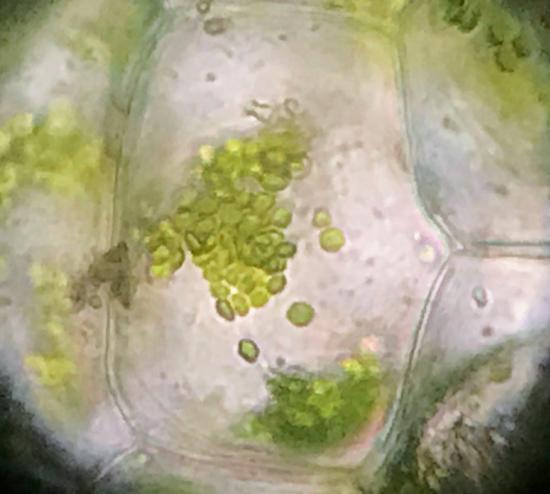2: Plant Cells and Tissues
( \newcommand{\kernel}{\mathrm{null}\,}\)
Plant Structure
Plants cells are complex structures with several organelles lacking in animal cells. Among these are the cell wall, central vacuole, and plastids (the most familiar of which are chloroplasts). There are three main tissue types, called epidermal, ground, and vascular tissue. Each tissue type consists of specialized cells adapted for unique functions. Plants have two organ systems: the root system and the shoot system (figure 3.a3.�). The root system is typically belowground and consists of roots, which specialized in water and nutrient absorption. The shoot system consists of stems and leaves and is typically aboveground. Stems function in supporting the plant and transporting materials (conduction), and leaves function in photosynthesis. This unit will explore these structure at the macroscopic and microscopic level.

Plant Cells and Tissues

Plants are multicellular organisms composed of eukaryotic cells. Cells are the basic building blocks of the organism. Plants are autotrophic and thus many of their cells contain large amounts of chloroplast, the organelle for photosynthesis (Figure 2.1). The green color of leaves are due to the large amounts of chloroplast within the cells. Plant cells obtain many other organelles, which we will study in this chapter (Figure 2.2). Cells with similar functions are arranged in tissues, which are arranged into plant organs such as roots, stems, and leaves. Together, these organs and their associated organ systems form the plant organism.
- 2.1: Introduction to Cells
- The cell theory states that 1) all plants and animals are composed of cells and that (2) cell is the most basic unit of life, and (3) all cells arise by reproduction from previous cells. Eukaryotic cells are generally around 10 - 100 μm in size. As a cell increases in size, its surface area-to-volume ratio decreases, decreasing the efficiency of transport.
- 2.2: Plant Cell Structure
- All cells have a plasma membrane, cytoplasm, and ribosomes. Eukaryotic cells are typically larger, have a true nucleus , and have other membrane-bound organelles that allow for compartmentalization of functions.
- 2.3: Plant Tissues
- Tissue is a union of cells which have common origin, function and similar morphology. Tissues belong to organs: organ is a union of different tissues which have common function(s) and origin. Plants have simple and complex tissues. The simple tissues (tissues with uniform cells) are composed of the same type of cells; complex tissues (tissues with more than one type of cells) are composed of more than one type of cell, these are unique to plants.
Attribution
Kammy Algiers (CC-BY-NC)


